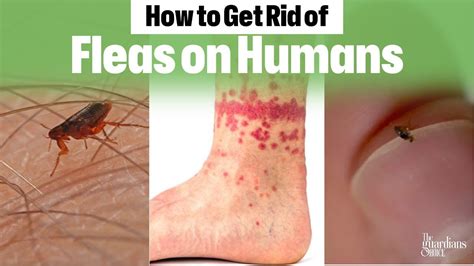How to Get Rid of Fleas on Humans: A Comprehensive Guide
Fleas are tiny, wingless insects that feed on the blood of mammals and birds. While they primarily infest pets, they can also bite humans, causing itchy welts and discomfort. This guide provides a comprehensive approach to eliminating fleas from yourself and your home. Remember, prevention is key, so we'll cover that too!
Identifying a Flea Bite
Before we delve into treatment, it's crucial to accurately identify a flea bite. Flea bites often appear in clusters or lines, unlike single mosquito bites. They're usually small, red bumps, and incredibly itchy. They may also be surrounded by a small, inflamed area. If you suspect a flea infestation, look for other signs like flea dirt (dark specks that resemble pepper) in your carpets or bedding.
Treating Flea Bites on Humans
The most important step is to resist the urge to scratch! Scratching can lead to infection. Here's how to treat the bites themselves:
1. Clean the Bite:
- Wash the affected area with mild soap and water. This helps prevent infection.
2. Apply a Cold Compress:
- A cold compress can reduce itching and inflammation.
3. Over-the-Counter Treatments:
- Hydrocortisone cream: This topical steroid cream can reduce itching and inflammation.
- Antihistamine cream: Can help relieve itching.
- Calamine lotion: Soothes itching and helps dry out the bites.
4. Oral Antihistamines:
For more severe itching or allergic reactions, an oral antihistamine like diphenhydramine (Benadryl) can provide relief. Always follow the dosage instructions on the packaging.
Eliminating Fleas from Your Home and Pets
Treating the bites is only half the battle. To prevent future infestations, you must eliminate fleas from your environment.
1. Vacuum Thoroughly:
- Pay close attention to carpets, rugs, upholstery, and pet bedding. Dispose of the vacuum bag immediately afterwards in an outside trash can.
2. Wash Bedding and Clothing:
- Wash all bedding, clothing, and pet bedding in hot water (at least 130°F) and dry on high heat for at least 30 minutes to kill any fleas or eggs.
3. Steam Clean:
- Steam cleaning carpets and upholstery can effectively kill fleas and their eggs.
4. Treat Your Pets:
- Consult your veterinarian. They can recommend appropriate flea treatments for your pet, such as topical medications, oral medications, or flea collars. Never use human flea treatments on your pets.
5. Flea Sprays and Foggers:
- You can use commercially available flea sprays and foggers to treat your home, but always follow the instructions carefully and ensure proper ventilation.
6. Natural Remedies (Limited Effectiveness):
While some natural remedies like diatomaceous earth are suggested, their effectiveness against fleas is limited and often requires significant effort.
Preventing Future Infestations
Prevention is far easier than cure. Here are some preventive measures:
- Regularly vacuum your home.
- Wash pet bedding frequently.
- Treat your pets for fleas regularly, as recommended by your veterinarian.
- Keep your yard clean and free of debris where fleas can breed.
Important Note: If you experience severe allergic reactions to flea bites, or if you suspect a large-scale infestation, consult a doctor or pest control professional immediately. They can provide more effective treatment options and help you completely eradicate the infestation.
